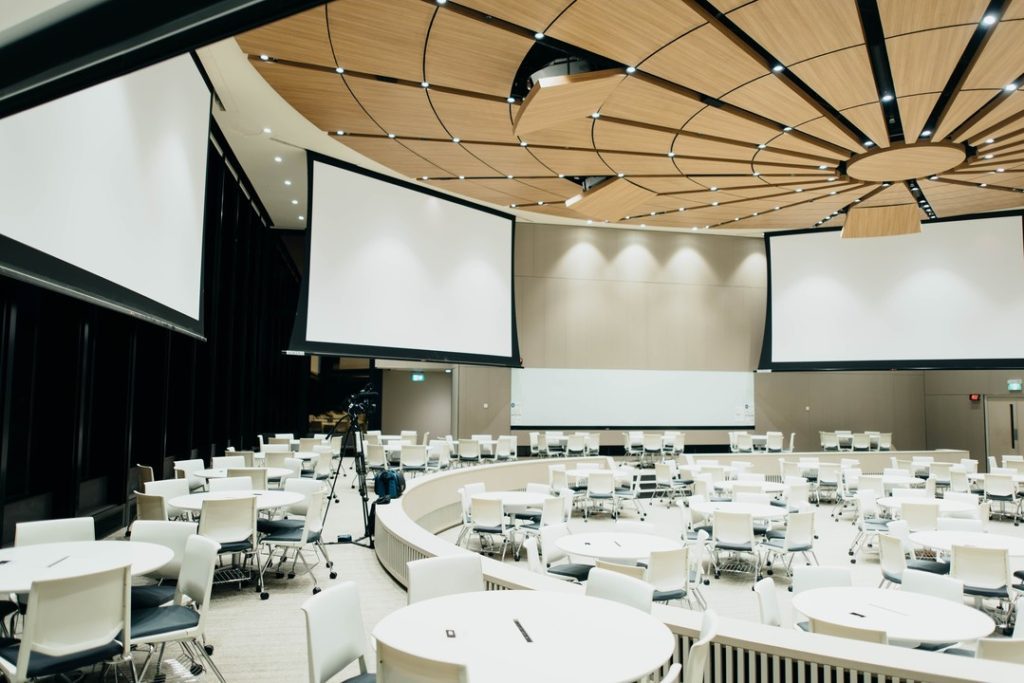As companies gear up for the new, connected workstyle, they are reassessing their video conferencing and teleconferencing capabilities. This includes huddle spaces and conference rooms that will accommodate gatherings of remote personnel along with those in the office and enable screen-sharing and other functionality that is part of every office’s workflow.
At the same time, most capital budgets are constrained, if not outright frozen. So, how can you provision an upgraded workspace with maximum cost-efficiency? Here are a few tips:
Plan To Save Money
If your approach starts with measuring the blank walls to determine how big the screens need to be, you’re already on your way to spending more than you should. The goal is to maximize the productivity of your space and minimize the cost of doing it, so plan with that goal in mind.
Determine what the intended use of each space will be and the optimal infrastructure for facilitating that use. You will probably find that there are only a couple of prospective use-cases: small group meetings to brainstorm or review work, and larger presentation spaces, perhaps all with teleconferencing capabilities. By standardizing the use cases, you can standardize the equipment required.
There are savings to be had by organizing the project this way; we’ll get to those in a minute. The more immediate advantage of aggregating and standardizing your equipment list is the discounts available for volume purchases. Depending on how large your order, these savings can be considerable. To achieve even greater cost-savings, working with a company that specializes in AV allows you to leverage their even greater volume buying capabilities.
Professional Cost-Cutting
Some people believe that AV equipment has become a commodity, and there is no meaningful difference between consumer grade and enterprise-class systems. This is an expensive misconception.
Enterprise-class AV is designed for 24/7 use. Even if the office is in use just 8 hours a day, the system is on the whole time… or, it should be. You don’t want people changing the systems in order to use them. That’s a waste of everyone’s time, and often results in the configuration being even harder for the next team to manage.
Professional-grade systems include automated or simplified connectivity and controllers designed for use by a changing population of users. These controls minimize or eliminate set-up hassles. This also eliminates one of the biggest hidden costs of AV equipment usage: time wasted. Those few minutes spent fumbling with gear, times the number of people in the meeting, times the number of meetings in a month, can equal surprisingly large dollars.
Such professional systems also enable a range of intelligent features, such as remote monitoring and troubleshooting. Just as IT support can access company computers to correct misconfigurations, AV support can access the AV equipment to address any problems. Complete automation is often possible, activated by motion sensors (like the lighting in many offices) and automatic detection and configuration of media sources. Such touchless controls not only save time and energy but are also more hygienic for a post-COVID workspace.
SYSTEMATIC SAVINGS
Not all the savings come from the equipment. If you have standardized that, you can also enjoy lower costs for systems integration, installation, maintenance, and support. These are big savings you can gain right from the start, when the products are being installed.
The same standardization also simplifies any maintenance and support moving forward. The fewer systems your support team has to account for, the better staged they are to manage them. Ideally, that team is responsible for every portion of the signal flow.
Strategizing a plan to save money on your AV—and then executing to that plan—is the best way to eliminate the hidden costs of AV, now and in the future.



